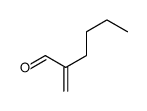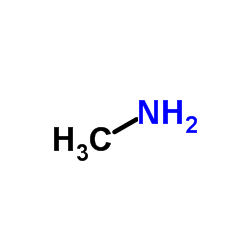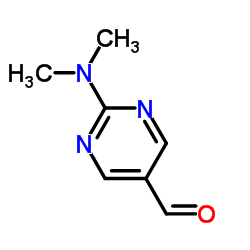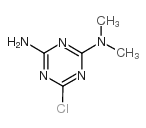Dimethylamine hydrochloride

Dimethylamine hydrochloride structure
|
Common Name | Dimethylamine hydrochloride | ||
|---|---|---|---|---|
| CAS Number | 506-59-2 | Molecular Weight | 81.545 | |
| Density | 0.64g/cm3 | Boiling Point | N/A | |
| Molecular Formula | C2H8ClN | Melting Point | 170-173 °C(lit.) | |
| MSDS | Chinese USA | Flash Point | N/A | |
| Symbol |

GHS07 |
Signal Word | Warning | |
| Name | Dimethylamine hydrochloride |
|---|---|
| Synonym | More Synonyms |
| Density | 0.64g/cm3 |
|---|---|
| Melting Point | 170-173 °C(lit.) |
| Molecular Formula | C2H8ClN |
| Molecular Weight | 81.545 |
| Exact Mass | 81.034531 |
| PSA | 12.03000 |
| LogP | 1.02850 |
| InChIKey | IQDGSYLLQPDQDV-UHFFFAOYSA-N |
| SMILES | CNC.Cl |
| Stability | Stable. Incompatible with strong oxidizing agents. |
| Water Solubility | 3000 g/L (20 ºC) |
CHEMICAL IDENTIFICATION
HEALTH HAZARD DATAACUTE TOXICITY DATA
|
| Symbol |

GHS07 |
|---|---|
| Signal Word | Warning |
| Hazard Statements | H302-H315-H319-H335 |
| Precautionary Statements | P261-P305 + P351 + P338 |
| Personal Protective Equipment | dust mask type N95 (US);Eyeshields;Gloves |
| Hazard Codes | Xn:Harmful |
| Risk Phrases | R22;R36/37/38 |
| Safety Phrases | S26-S36/37-S37/39 |
| RIDADR | NONH for all modes of transport |
| WGK Germany | 1 |
| RTECS | IQ0220000 |
| HS Code | 29211190 |
| Precursor 0 | |
|---|---|
| DownStream 10 | |
| HS Code | 2921110020 |
|---|---|
| Summary | 2921110020 dimethylamine hydrochloride。supervision conditions:23(import license for dual-use item and technologies,export license for dual-use item and technologies)。VAT:17.0%。tax rebate rate:9.0%。MFN tarrif:6.5%。general tariff:30.0% |
|
Molecular understanding of sulphuric acid-amine particle nucleation in the atmosphere.
Nature 502(7471) , 359-63, (2013) Nucleation of aerosol particles from trace atmospheric vapours is thought to provide up to half of global cloud condensation nuclei. Aerosols can cause a net cooling of climate by scattering sunlight ... |
|
|
Molecular understanding of atmospheric particle formation from sulfuric acid and large oxidized organic molecules.
Proc. Natl. Acad. Sci. U. S. A. 110(43) , 17223-8, (2013) Atmospheric aerosols formed by nucleation of vapors affect radiative forcing and therefore climate. However, the underlying mechanisms of nucleation remain unclear, particularly the involvement of org... |
|
|
Co-application of lidocaine and QX-572 induces divergent pain behaviours in mice.
J. Pharm. Pharmacol. 67 , 1272-8, (2015) We investigated the analgesic effects of lidocaine (LDC) and lidocane derivative, QX-572, co-application on the evoked pain behaviour (complete Freund's Adjuvant (CFA)-induced) and spontaneous pain be... |
| EINECS 208-046-5 |
| N-methylmethanamine,hydrochloride |
| Methanamine, N-methyl-, hydrochloride (1:1) |
| Metformin impurity F |
| Dimethylamine hydrochloride |
| N-Methylmethanamine hydrochloride (1:1) |
| N-METHYLMETHANAMINE, HYDROCHLORIDE |
| Dimethylammonium chloride |
| MFCD00012477 |
| Metformin Impurity 6 |
![3-(dimethylamino)-1-[4-[3-(dimethylamino)propanoyl]phenyl]propan-1-one structure](https://image.chemsrc.com/caspic/104/112169-33-2.png) CAS#:112169-33-2
CAS#:112169-33-2 CAS#:1070-66-2
CAS#:1070-66-2![3-[(Dimethylamino)methyl]-1H-indole-4-carbonitrile structure](https://image.chemsrc.com/caspic/392/105907-63-9.png) CAS#:105907-63-9
CAS#:105907-63-9 CAS#:50-00-0
CAS#:50-00-0 CAS#:74-89-5
CAS#:74-89-5 CAS#:1070-13-9
CAS#:1070-13-9 CAS#:1071-38-1
CAS#:1071-38-1 CAS#:103-87-7
CAS#:103-87-7 CAS#:55551-49-0
CAS#:55551-49-0 CAS#:32998-04-2
CAS#:32998-04-2